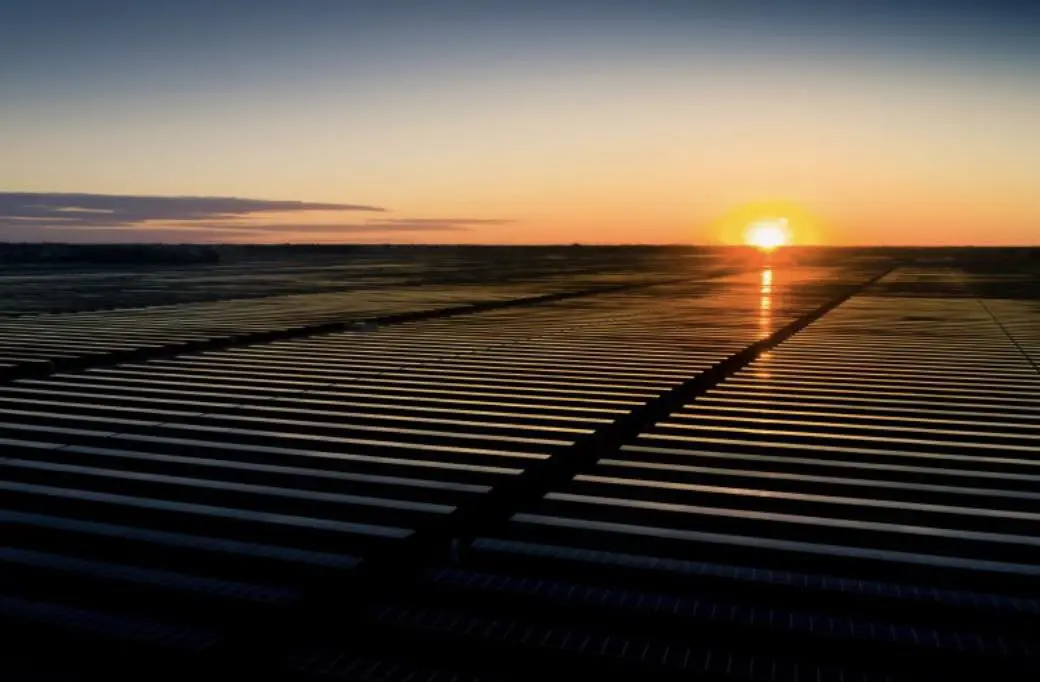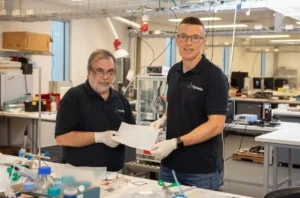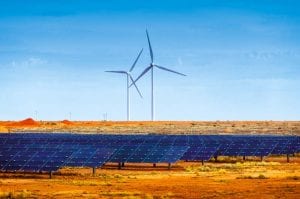Aspiring renewables and hydrogen developer Frontier Energy says it has the potential to produce commercial quantities of green hydrogen at costs well below industry estimates following a new assessment of a large scale solar-fuelled hydrogen project in Western Australia.
Frontier’s operations are focused on its Bristol Springs project, about 120kms south of Perth, where it plans an initial stage of a 114MW solar farm and a 36.6MW alkaline electrolyser to make green hydrogen.
A new study canvassed adding wind to the project, but concluded it would not be competitive. It found expanding the solar component to around 468MW would be optimal, before a longer term plan to increase the project to around one gigawatt.
Importantly, total unit costs, inclusive of capital, for the first stage of hydrogen production is projected to average just $2.83 per kg, making it one of the lowest cost producers in Australia, based on sector estimates, according to Frontier Executive Chairman Grant Davey.
The Australian Renewable Energy Agency forecasts the cost of producing green hydrogen in Australia to be between $6-$9 per kg, based on current elecytrolyser and renewable energy costs.
Frontier’s cost estimate is largely driven by the project’s 846-hectare location 120 kms from Perth, which utilises nearby existing infrastructure, alleviating the need to build its own.
This includes connection to the Landwehr Terminal, allowing for excess solar-renewable energy to be sold to the main grid, known as the South West Interconnected System, as well as multiple water sources. For Frontier, this eliminates the requirement for otherwise capital-intensive infrastructure spending, such as desalination.
Connecting to SWIS via the Landwehr Terminal would allow for additional revenue from excess power sales, reserve capacity credits and LGCs (Large-Scale Generation Certificates).
It would also allow for power to be drawn down during periods of low solar energy yields, to meet the energy draw of the electrolyser, according to Davey. This will allow for the grid to effectively act as a battery for the project, he said.
Frontier anticipates its initial hydrogen production will be sold into the domestic market, with its first customers likely to be long-haul transportation pipelines and energy storage.
Financing discussions for the project are expected to start later this year, with additional the company expecting additional funding via government grants and incentives.
Frontier weighed the possibilities of both wind and solar energy solutions but found that wind was not competitive and a solar-only option would deliver the best outcome. Battery storage was also deemed uneconomic due to high capital costs.
Frontier’s strategy differs from that of major energy producer Woodside, which is proposing development of a 1.7 GW green hydrogen plant in Tasmania using a combination of solar and wind power.
So-called “green” hydrogen is produced by running an electricity current through water using an electrolyser powered by renewable energy. “Blue” hydrogen refers to production using carbon-emitting natural gas.
According to the International Energy Agency there are 51 hydrogen energy projects in Australia, ranking the country seventh globally.
Davey said Frontier’s long-term ambition is to generate over 1GW of renewable energy, with discussions underway for additional land opportunities to lift output.
“Our strategy aligns with federal and state government’ drive to decarbonise energy supply to industry and households,” Davey said. “We will continue to assess additional opportunities in the region as our long-term strategy is to have renewable green energy generations of more than 1 GW.”
The International Energy Agency noted in a recent report that hydrogen energy is seen as an important energy carrier for the deep decarbonisation of the chemical, steel and transportation industries, as well as to support long-tern energy storage.
The World Energy Council predicts that by 2050, hydrogen energy will account for up to 25 percent of global final energy consumption.










